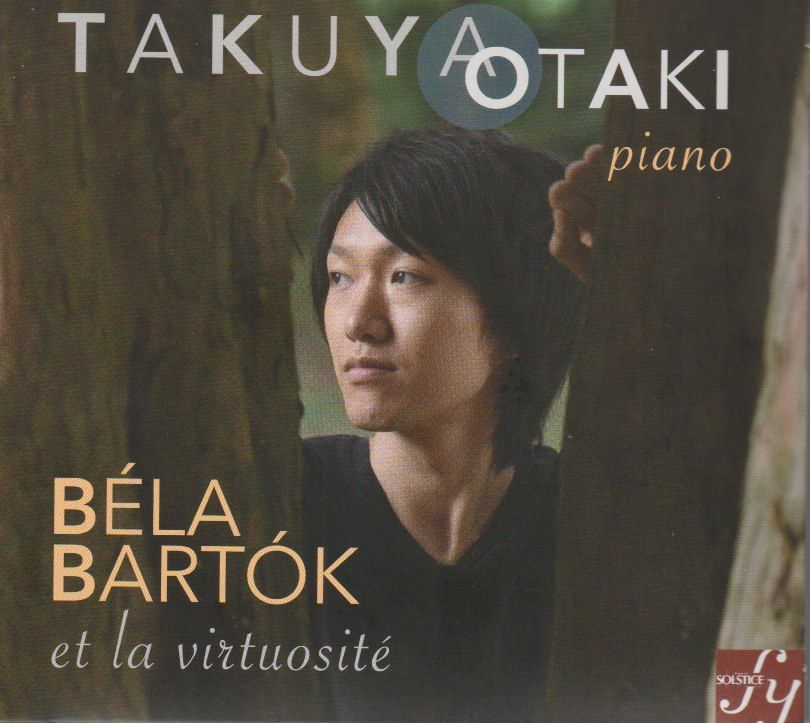Béla Bartók et la Virtuosité: Piano Works
A fabulous disc, one entirely worthy of exploration

This is one of a series of reviews of discs recorded by winners of the Orléans Piano Compstition, an event unique in its specialisation in music of the 20th and 21st centuries.The most recent competition took place from April 3rd to 11th, 2022: reports and interviews will be published both here and in International Piano magazine.
Takuya Otaka won in 2016, taking not just the First Prize of the competition's 12th edition, (the First Prize Special Distinction "Blanche Selva") but also two special disinction prizes (there are a lot of prizes in this competition!). His biography is here. Winners record a disc with repertorie of their choice, and for Otaki it was Bartók, music he clearly has a resonance with.
Here's the First Burleske with a promotional slideshow as video:
The vituosity of the Op. 1 Rhapsody is remarkable: unmistakaby Bartók but of technical demands that are up there with Liszt:
For the Rhapsody, it is perhaps the name of Zoltán Kocsis that flashes up immediately, in his astonishing Philips recording:
Dedicated to Emma Gruber (a former student of Dohnányi, and wife of Kodály), the piece was finished in 1904. there is a version for piano and orchestra which dates from 1905. The piece marks the beginning of the phase in which Bartók increased his use of folksong from Romania and Hungary. The Adagio molto opening lasts for nearly 15 minutes, after which a Poco allregretto marks the begining of the faster section. There is no doubting Otaki's fiercely passionate take on the long opening section. Yes, we hear Liszt (particularly later on) but in Otaki's performance we hear Bartók's original voice clearly, too.
A set of Three Hungarian Folksongs from Czik, Sz 35a follows. Czik, when Bartók visited, was part of Transylvania. They make a charming triad, the final dance by far the most active. Here's a video of Otaki's competition performance from Orléans' Salle d'Institut:
The set of three Burlesques (1908-10) finds Bartók in fine, humorous form, particularly the acciaccatura-laden second:
The griff side of Bartók is recognisable in the low-register opening of the first of two Romanian Dances, Op. 81/ Sz 43 / BB 56:1 (published 1910):
and we hear an exuberant virtuosity in the second, brilliantly conveyed by Otaki along with a real sense of delight:
No doubting the virtuoso stakes in the Three Etudes of Op. 17 (Sz 72 / BB 81, 1918). We are pretty much in atonal regions for the opening Etude, although there is still a Hungarian inflection, particularly in the downbeat accents (mirroring the accnetuation of spoken Hungarian):
One might be forgeiven for mistaking the second for Debussym though, and how beautifully Otaki renders Bartók's writing here (and how brilliantly he changes touch between first and second Etudes):
The final etude eases into its virtuosity but when it finds it, Otaki is sure to present it full force:
A fabulous disc, one entirely worthy of exploration.
A final word on the cataloguing of Bartók's works. He used Opus numbers up to Op. 31 for his works composed 1890-94. He then started again (so there's a good case for alternatives!) and went up to Op. 21; he then started again (!) but only assigned opus numbers to what he considered primary works. There are three alternative cataligiues, of which two have attained currency, one of which more than the other. First is that of András Sollosy (Sz numbers); then there is László Somfai's catalogue, chronological with BB numbers 1 to 129. There is also a catalogue by Denijs Dille, which is more infrequently used.
Bartok Piano Works